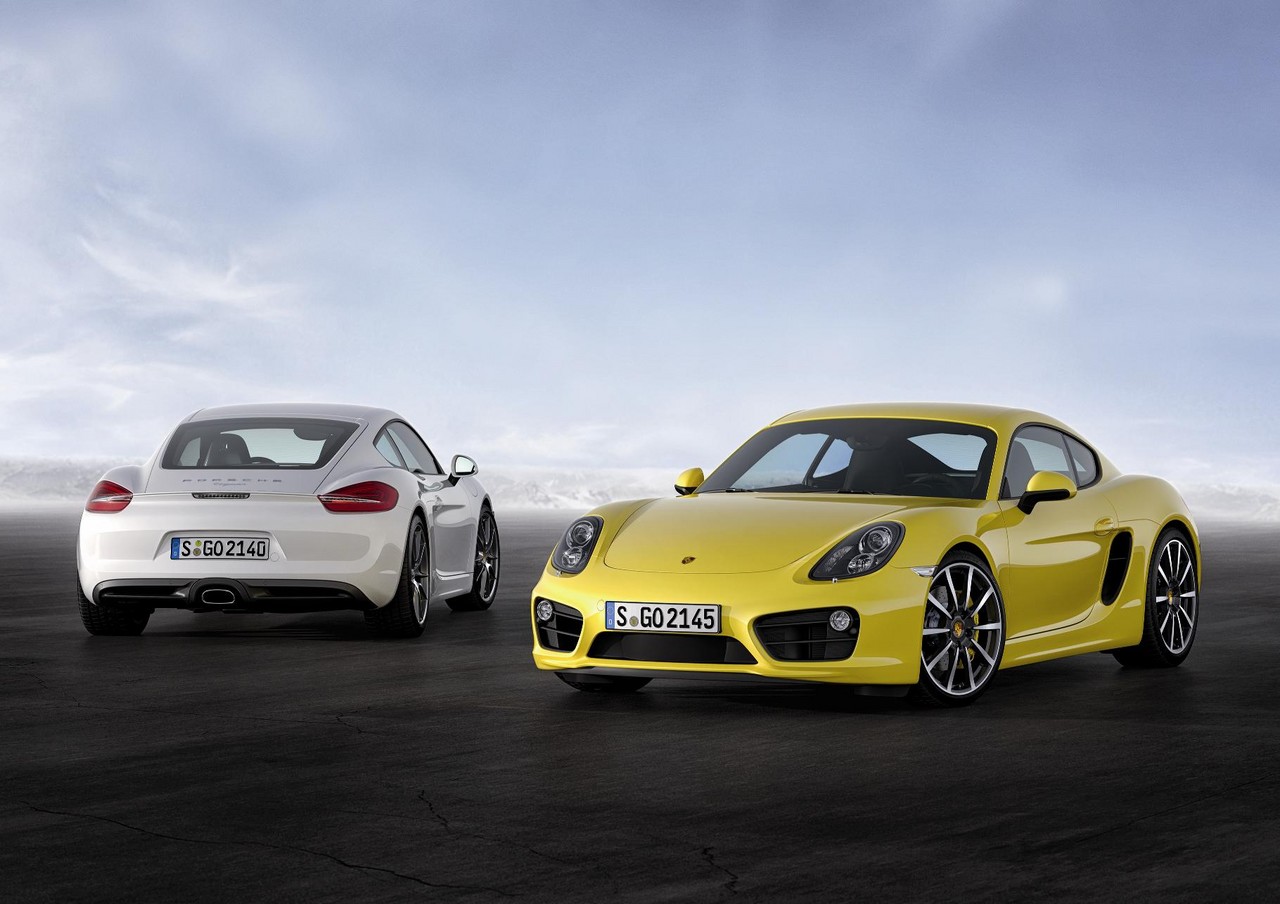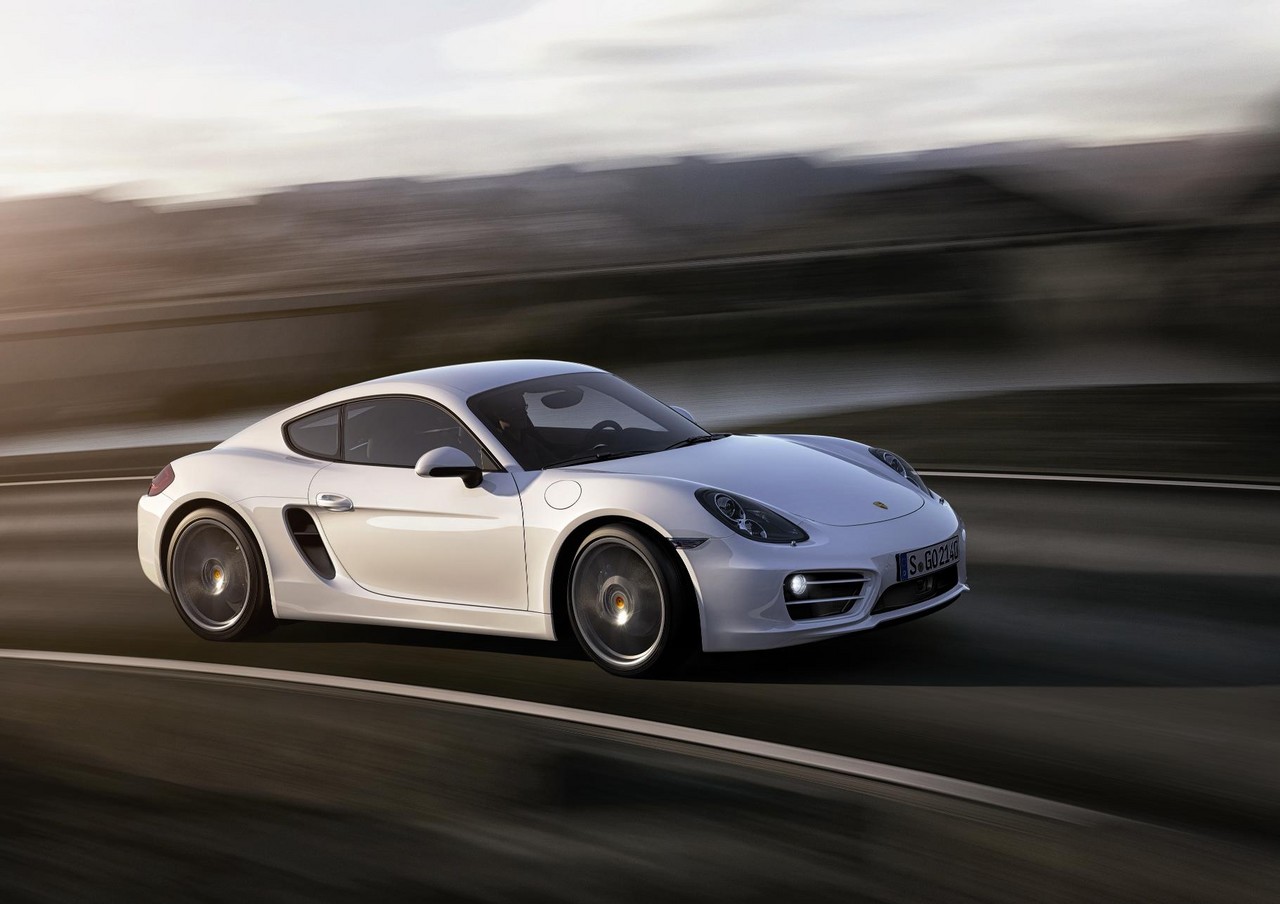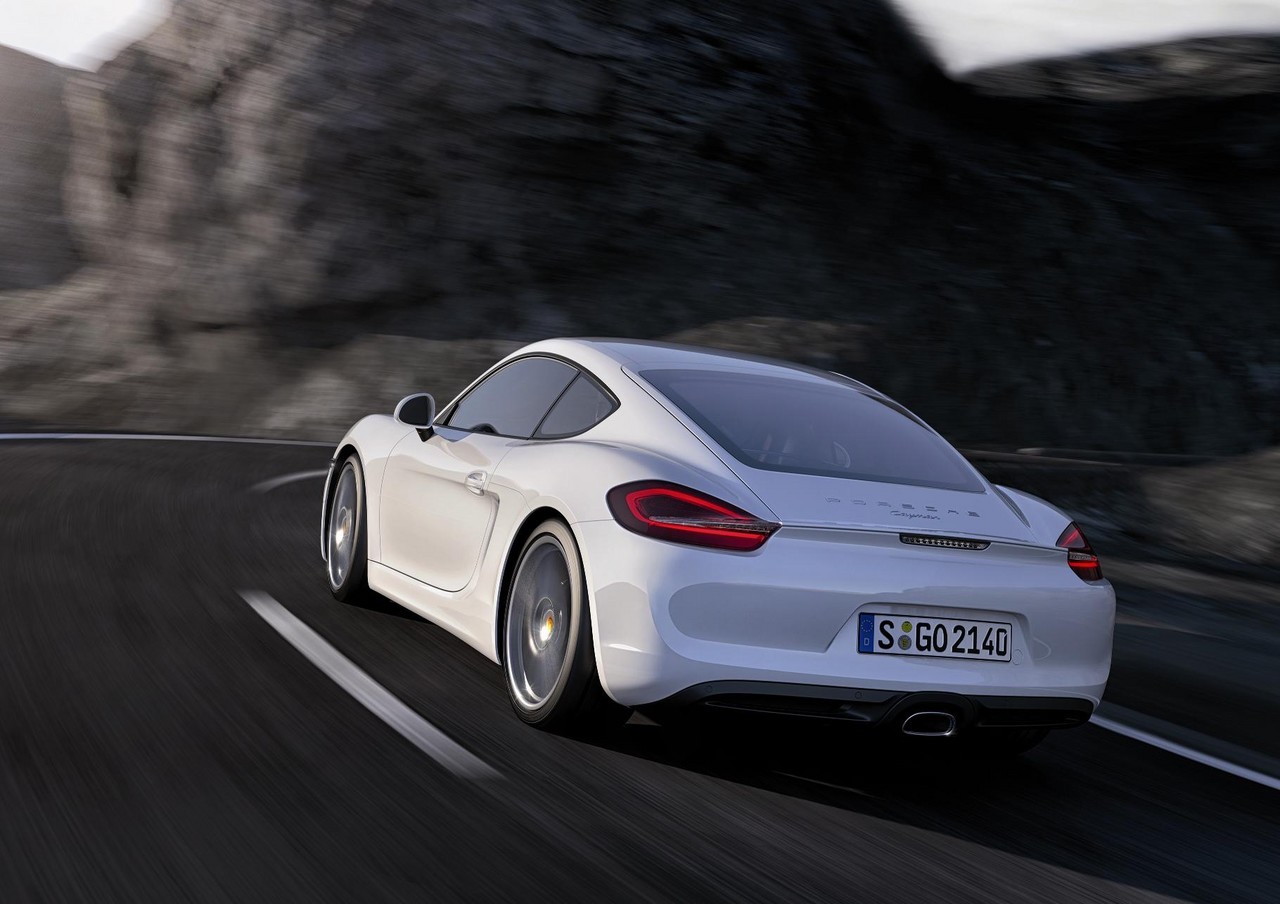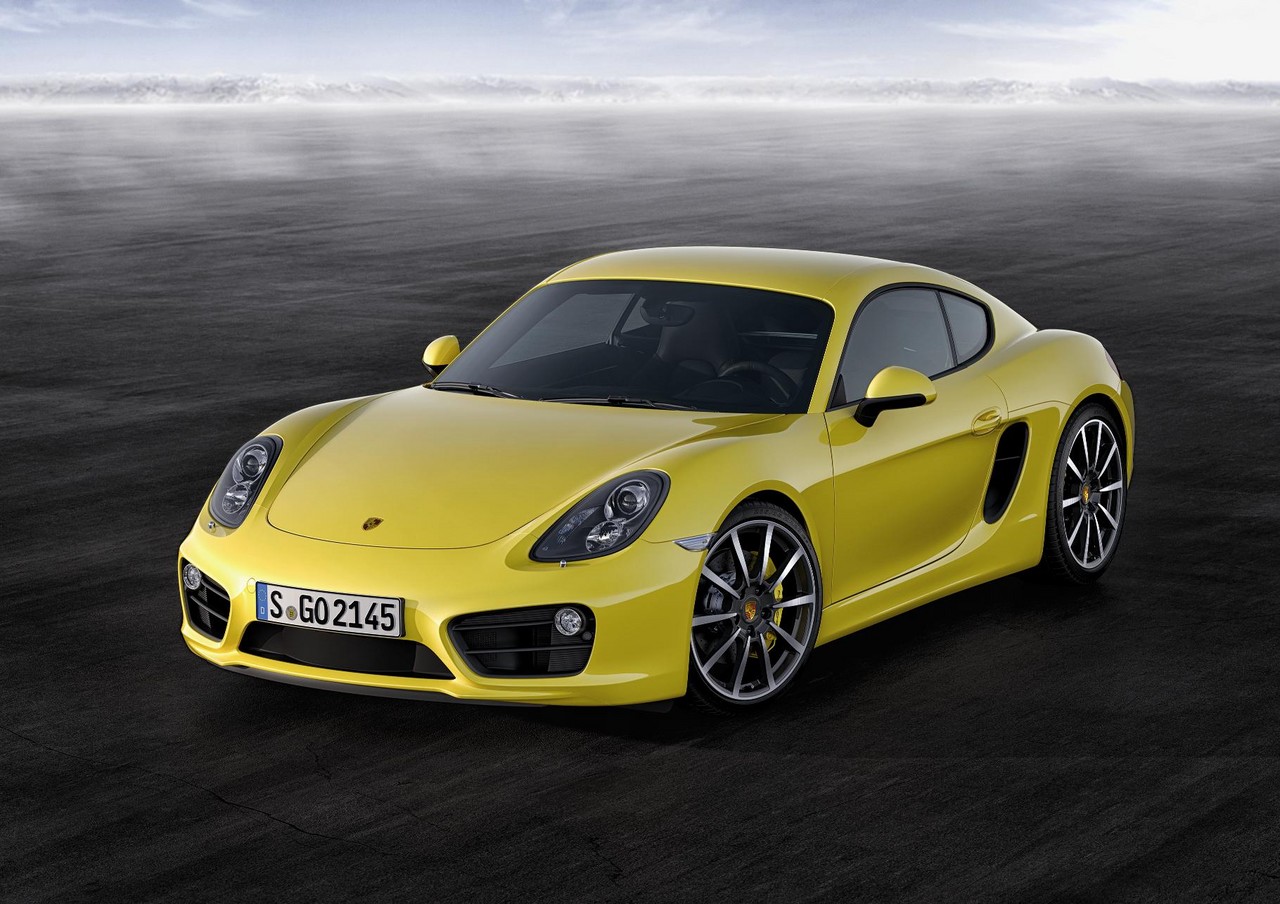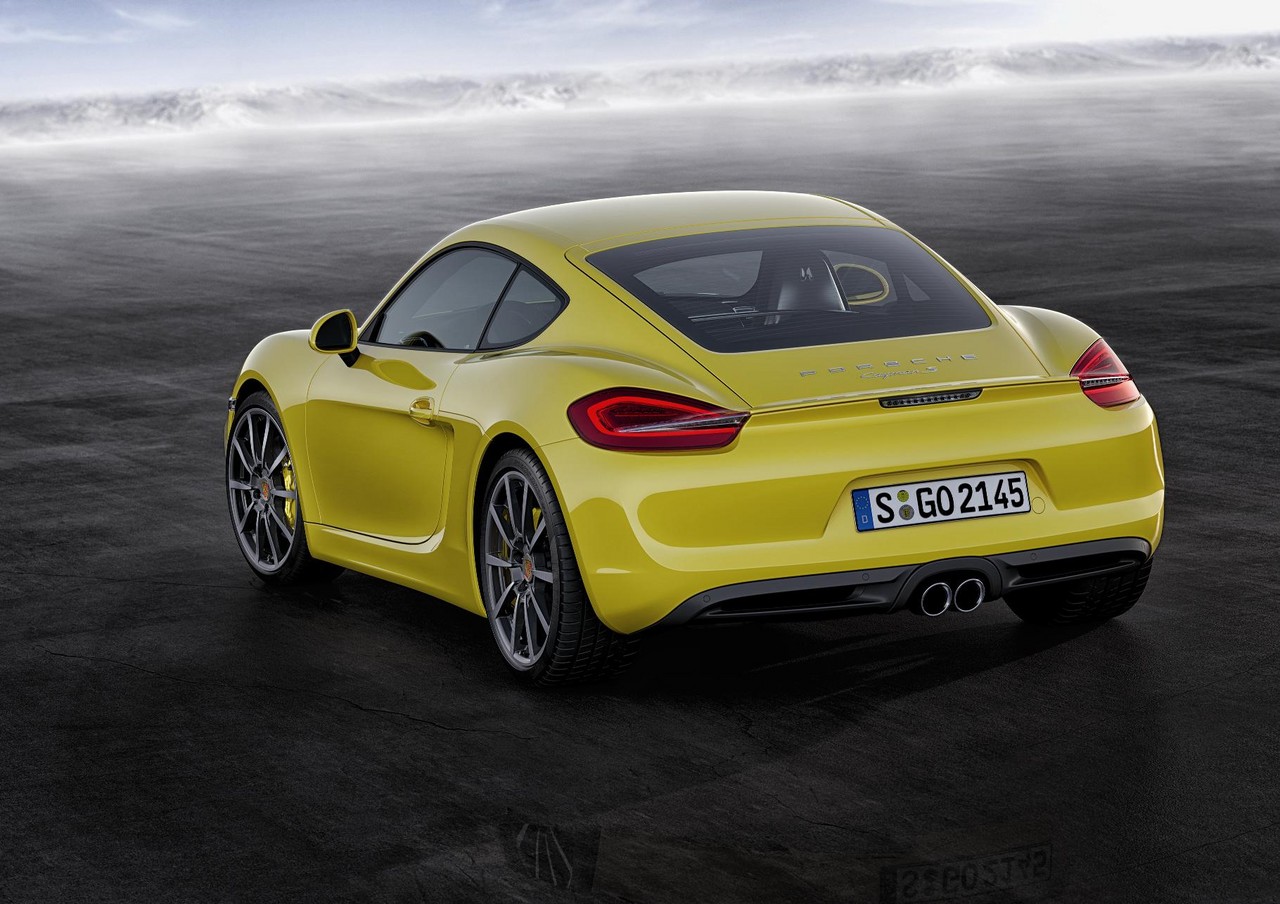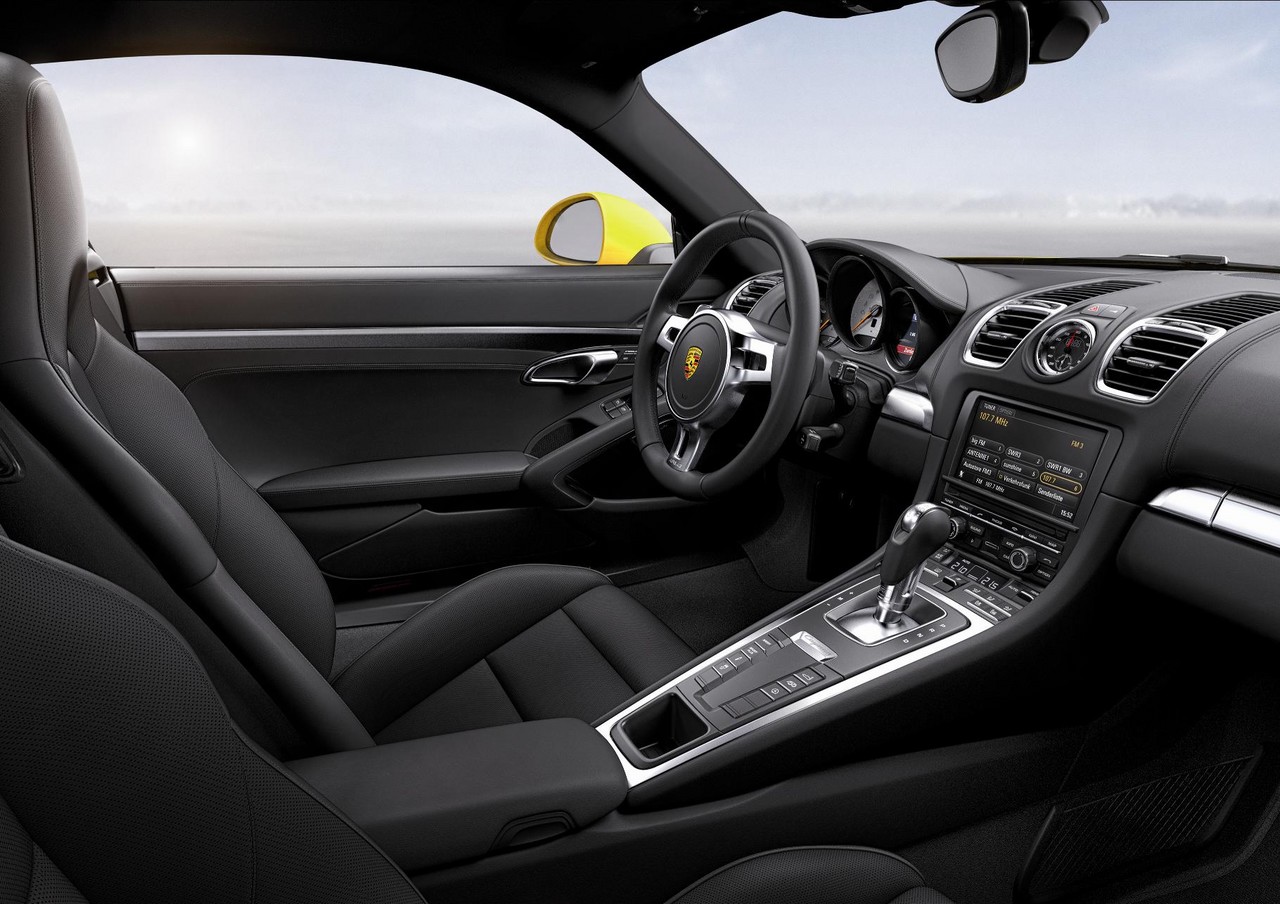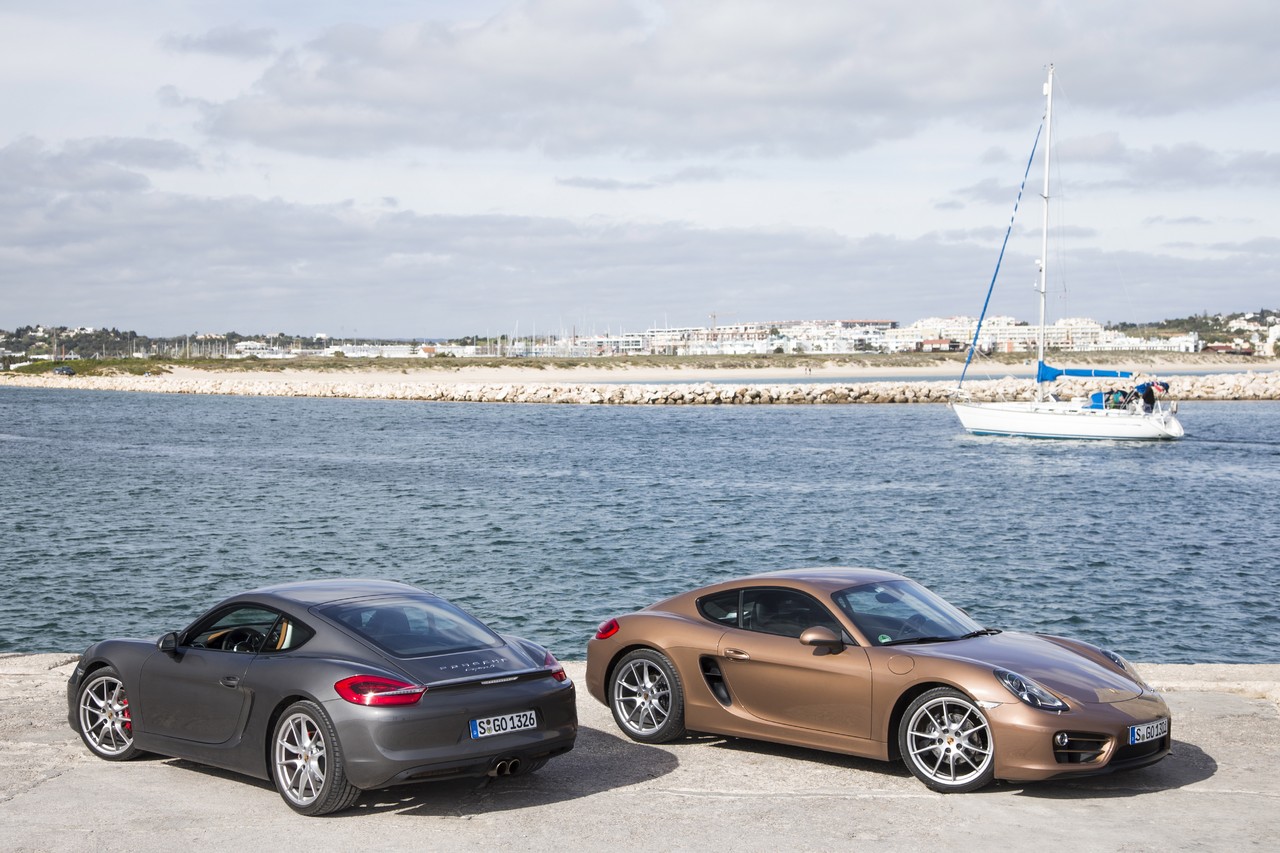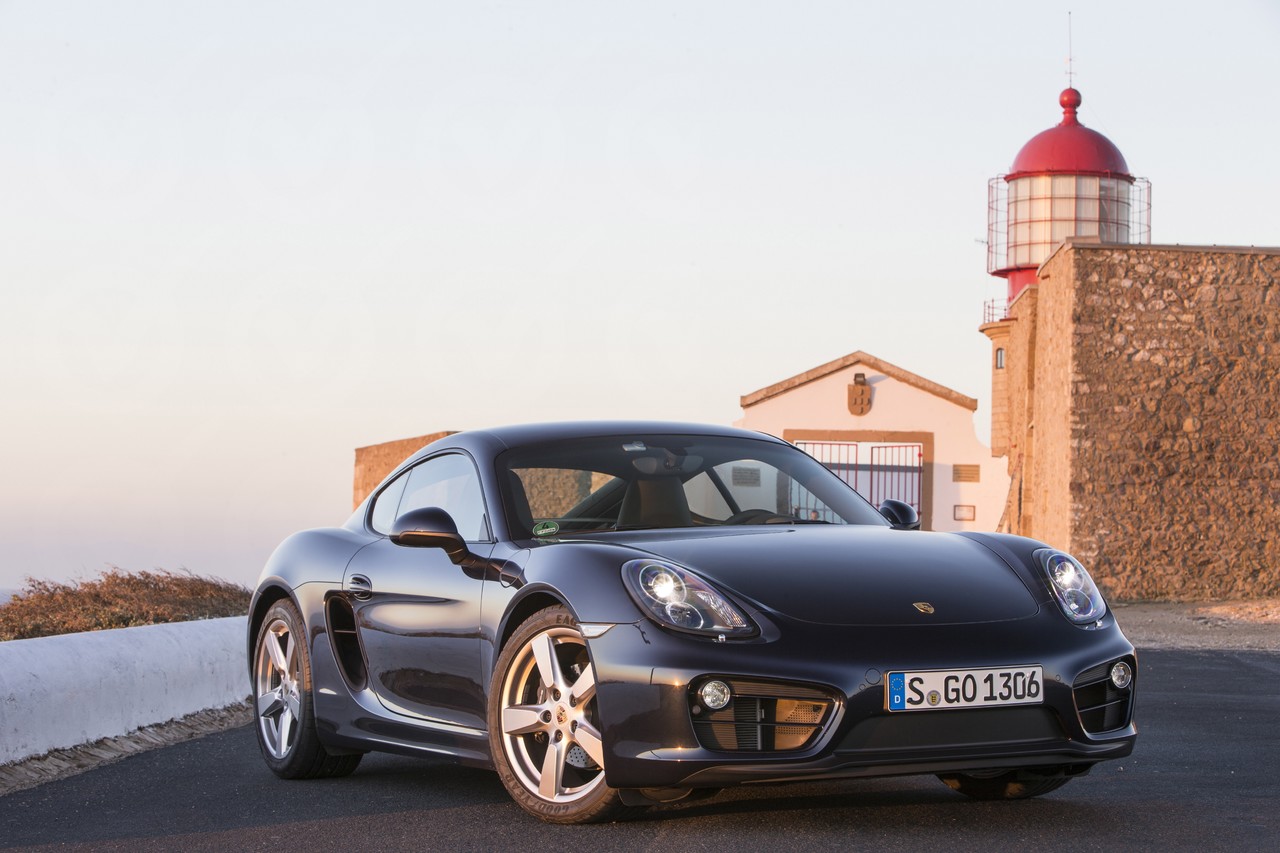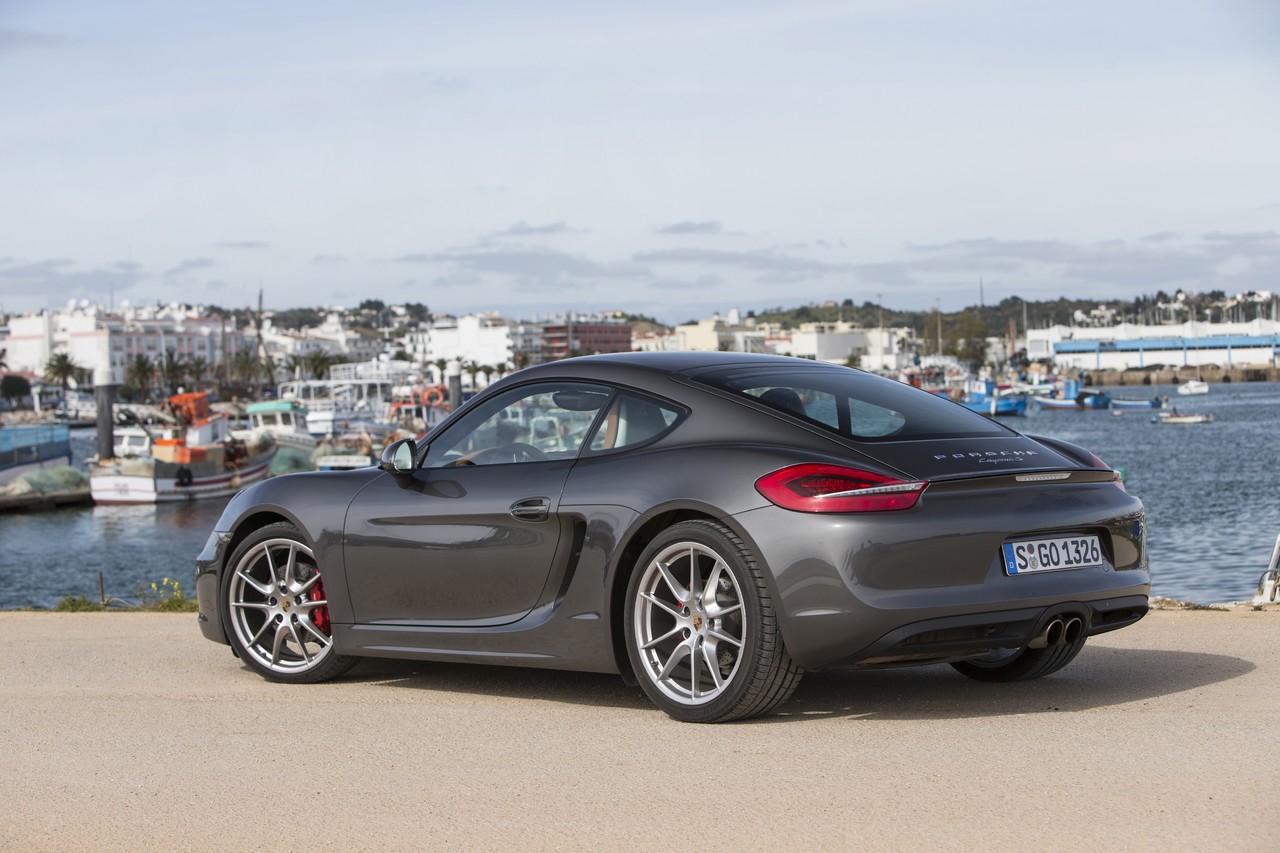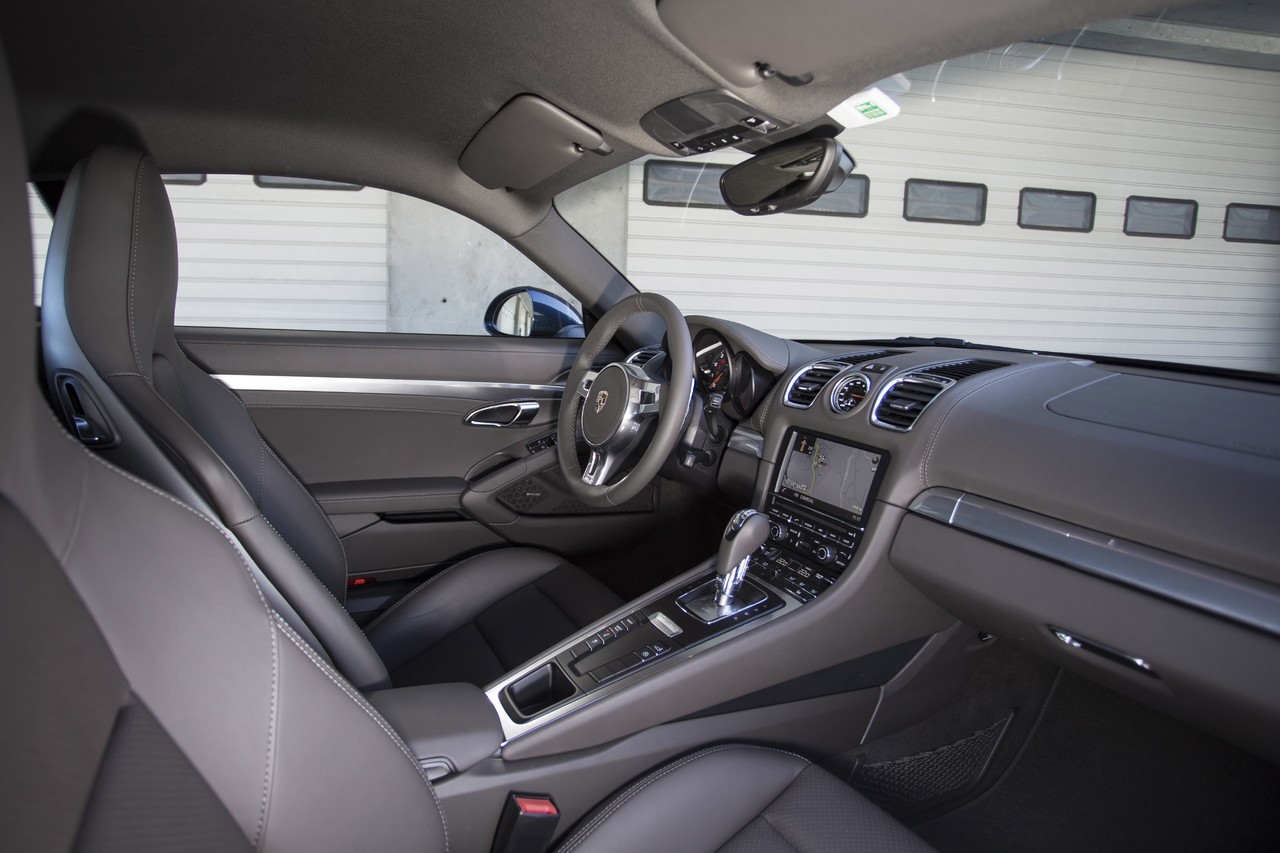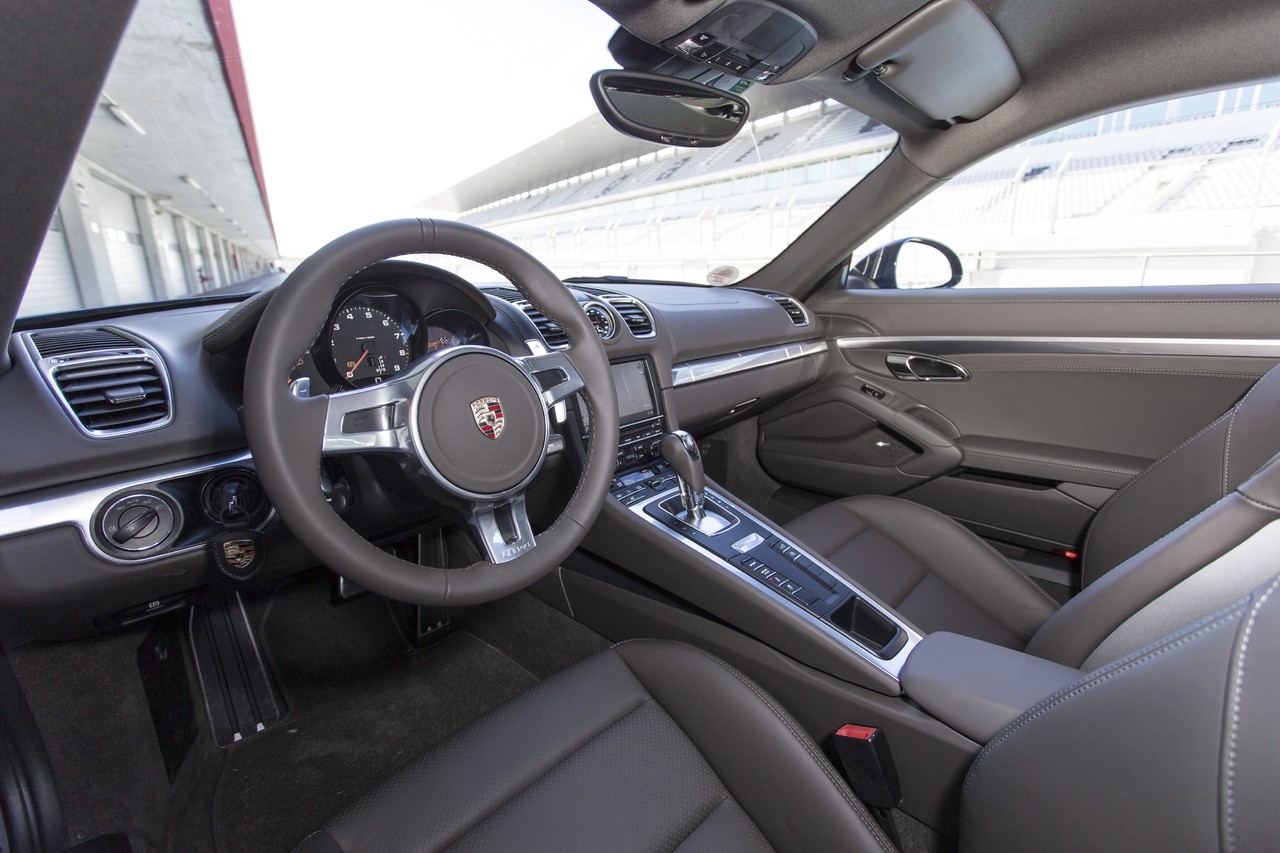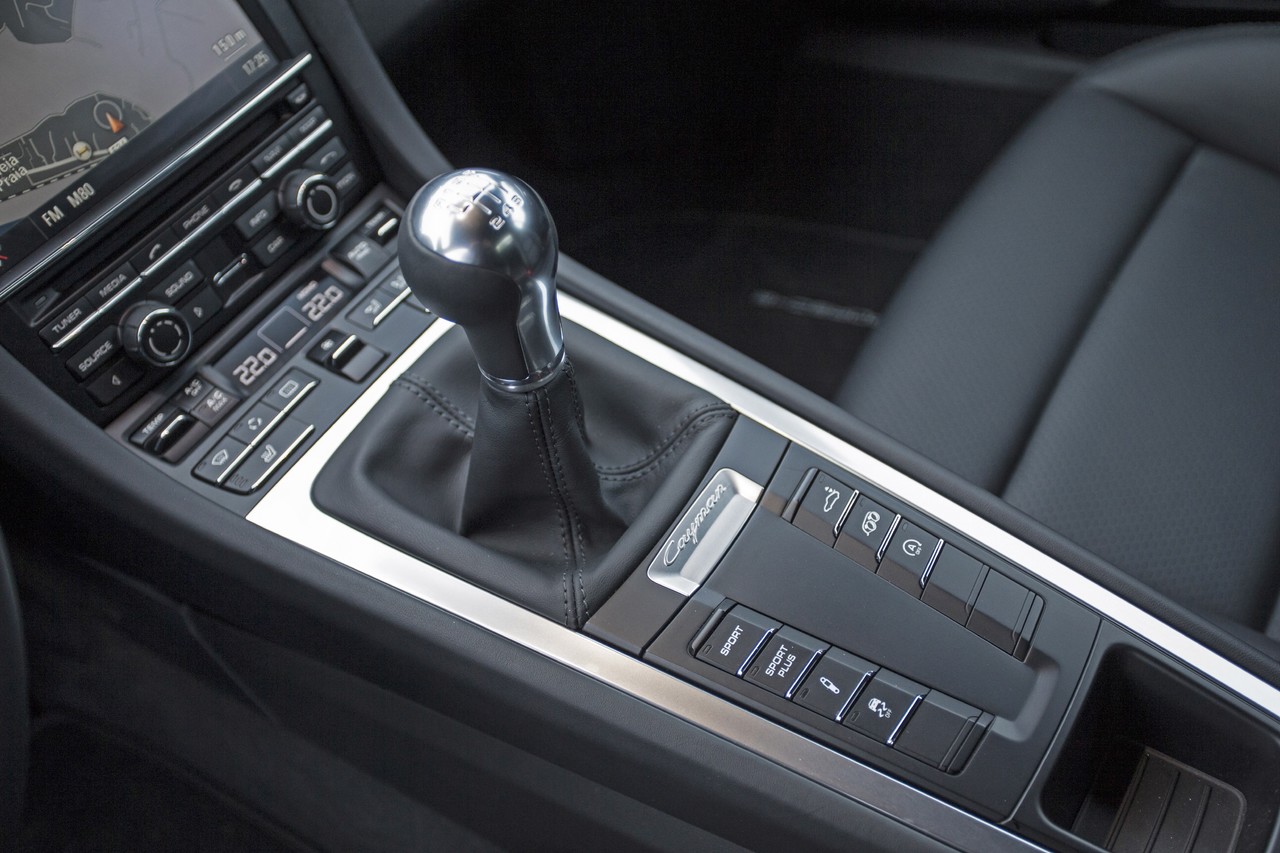
- Powerful free-revving engines
- Balanced, agile chassis
- Outstanding ride/handling balance
- Precise, well-weighted steering
- Electric steering lacks feel of Porsche 987 Cayman
- Porsche has limited performance to protect the Porsche 991 911 Coupe
- Driving position lacks legroom for tall drivers
- Pedals slightly offset
- High servicing and repair costs
Overview
Released in May 2013, the Porsche 981 Cayman was a mid-engined, two-door coupe. Manufactured in Osnabruk, Germany, the 981 Cayman and Cayman S were powered by 2.7- and 3.4-litre horizontally-opposed six-cylinder engines, respectively. The Cayman GTS was released in June 2014.
Engines and transmissions
Both the 2.7- and 3.4-litre engines featured direct injection, auto start/stop and variable valve timing and lift (Porsche’s ‘VarioCam Plus’) on the intake side, while the 3.4-litre engine also had a switching resonance flap that provides greater torque at low revs and a uniform torque curve.
The engines were mated to either six-speed manual or seven-speed double clutch transmissions (Porsche’s Doppelkupplungsgetriebe, or PDK). To conserve fuel, models fitted with the double clutch transmission also had a coasting function that enabled the engine to run in neutral when power was not required.
| Years | Engine | Trans. | Peak power | Peak torque | |
|---|---|---|---|---|---|
| Cayman | 2013-16 | 2.7-litre MA122C petrol F6 | 6sp man., 7sp DCT |
202 kW at 7400 rpm | 290 Nm at 4500-6500 rpm |
| Cayman S | 2013-16 | 3.4-litre MA123C petrol F6 | 6sp man., 7sp DCT |
239 kW at 7400 rpm | 370 Nm at 4500-5800 rpm |
| Cayman GTS | 2014-16 | 3.4-litre MA123 petrol F6 | 6sp man., 7sp DCT |
250 kW at 7400 rpm | 380 Nm at 4500-5800 rpm |
| Cayman GT4 | 2015-16 | 3.8-litre DBX petrol F6 | 6sp man. | 283 kW at 7400 rpm | 420 Nm at 4750-6000 rpm |
Body and dimensions
Based on the 981 Boxster platform, the 981 Cayman chassis had mixed aluminium-steel construction whereby 44 per cent of the body-in-white consisted of aluminium (including the front body, floor and rear body, the doors and bootlids). Significantly, the chassis achieved a 40 per cent increased in torsional rigidity and contributed to mass reductions of up to 30 kg according to the variant.
Compared to the 987 Cayman , the 981 Cayman was 33 mm longer (at 4380 mm), the same width (1801 mm), 11 mm lower (1294 mm) and had a 59 mm longer wheelbase (2475 mm). Furthermore, the windscreen was shifted forward and the roofline extended for greater interior space.
Suspension and steering
The 981 Cayman had MacPherson strut suspension front and rear, and introduced an electromechanical power steering system.
PASM and PTV
The Cayman was available with Porsche’s Active Suspension Management Technology (PASM) as an extra-cost option. With continuously adjustable shock absorbers and a pair of accelerometers, PASM offered selectable ‘Normal’ and ‘Sport’ modes. In Sport mode, the suspension was lowered and a firmer damper control map was activated. In its normal setting, the PASM would automatically adjust to changes in driving style, becoming firmer in response to greater dynamic forces.
Porsche Torque Vectoring (PTV) was also available as an option and consisted of a mechanical rear axle differential lock which could brake the inside rear wheel when cornering for more accurate handling. The differential lock had an asymmetric locking action of 22 per cent in traction and 27 per cent in propulsion.
Safety equipment
Standard safety equipment for the 981 Cayman included dual front airbags, front side airbags, curtain airbags, ABS, electronic brakeforce distribution, brake assist, electronic stability control, traction control and front seatbelts with pretensioners and load limiters.
For models fitted with the PDK transmission, adaptive cruise control (ACC) and ‘Porsche Active Safe’ (PAS) were available as extra-cost options. The ACC system used a radar sensor to detect objects up to 200 metres ahead and would vary vehicle speed to maintain a preset distance. The PAS system used the same radar to monitor traffic and would provide warnings (visual, acoustic and applying a ‘jolt’ in the brake pedal). If the driver did not react with appropriate braking, the system could increase brake pressure up to hard braking.
Brakes
The Cayman had 316 mm by 28 mm vented front brake discs and 299 mm by 20 mm vented rear discs (both with four-piston calipers). The Cayman S, however, had 330 mm by 28 mm vented front discs.
Features: Cayman and Cayman S
Standard features for the Cayman included 18-inch alloy wheels with 235/45 front and 265/45 rear ZR18 tyres, a seven speaker sound system with a CD/DVD player, MP3-compatibility, auxiliary inputs (3.5 mm/USB/iPod), and Bluetooth connectivity, satellite navigation with a seven-inch touch screen, dual-zone climate control air conditioning, daytime LED running lights, rear parking sensors, automatic headlights, a leather-wrapped steering wheel and gear shift lever, remote central locking, power windows and heated mirrors, a 12 volt power outlet, trip computer, motion-sensing alarm and an immobiliser.
The Cayman S was further equipped with 19-inch alloy wheels with 235/40 front and 265/40 rear ZR19 tyres and bi-xenon headlights.
2014 Cayman GTS
Released in Australia in June 2014, the Cayman GTS was fitted with 20-inch black Carrera S alloy wheels with 235/35 front and 265/35 rear tyres, a unique front spoiler, black finish bi-xenon headlights with Porsche Dynamic Light System (PDLS), black gloss rear lettering and a lower rear apron.
As standard, the Cayman GTS was also fitted with Porsche Active Suspension Management (PASM, detailed below) and a Sport Chrono package which included dynamic engine mounts that could stiffen to reduce the effects of mass transfer and, for models with the PDK transmission, a Launch Control function. For models with manual transmissions, however, the Sport Chrono package included automatic declutching with downshifts in the Sport Plus drive mode.
2015 Cayman GT4
Released in Australia in the third quarter of 2015, the Cayman GT4 was powered by a 3.8-litre engine which is derived from the 991 911 Carrera S. Compared to standard Cayman, the Cayman GT4 had a 30 mm lower body, an upgraded braking package and be identified by its three distinctive inlet openings in the front mask and large fixed rear wing.
Sharing components and ‘genetic spirit’ with the 911 GT3, standard features for the Cayman GT4 included 20-inch alloy wheels, 245/35 front and 295/30 rear Michelin Pilot Sport Cup 2 tyres, sports seats upholstered in leather and Alcantara, bi-xenon headlights and Porsche’s ‘Sport Chrono Pack’ with dynamic engine mounts. As standard, the Cayman GT4 was fitted with the Porsche Torque Vectoring (PTV) system with mechanical rear limited slip differential (described in ‘PASM’ and ‘PTV’, above).
Extra-cost options for the Cayman GT4 included PCCB ceramic brakes, shell-backed seats made of carbon fibre reinforced plastic (CFRP), a custom Sport Chrono Package with a ‘Track Precision’ app, and a Club Sport Package.
May 2015 updates
In May 2015, standard features for the Cayman range were extended to include fourteen-way power adjustable front seats, heated front seats, front parking sensors and a multi-function steering wheel.
Porsche Cayman Black Edition
In October 2015, Porsche released the Cayman Black Edition which was powered by the 2.7-litre F6 engine. Compared to the standard Cayman, the Cayman Black Edition was further equipped with 20-inch ‘Carrera Classic’ alloy wheels, bi-xenon headlights with Porsche Dynamic Light System (PDLS), rain-sensing wipers, auto-dimming mirrors and aluminium side window trims. Inside, the Cayman Black Edition featured an embossed Porsche crest on the seat headrests, SportDesign steering wheel and door sill guards with the ‘Black Edition’ logo in black.
Brochures
Related links
